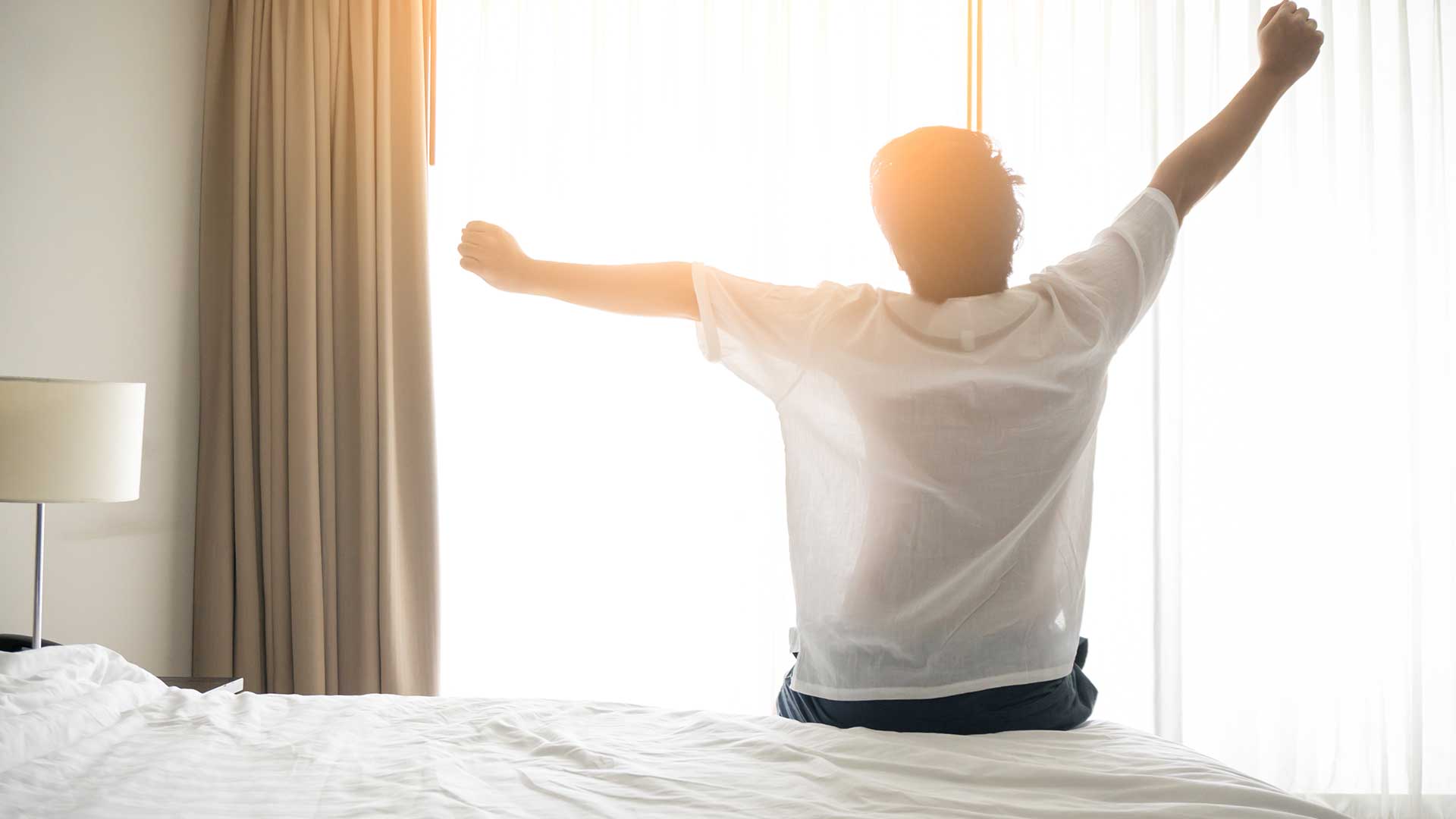
Are you looking to find out about the best morning routine you can apply to yourself? We got you covered. A structured schedule in the morning is always a great way to start your day as it builds discipline.
Planned morning routines can maximize and highlight what you need to do to be fully energized before starting your day. Unsure what morning routine to follow? This article will cover the best morning routine one should follow, helping them maximize their mornings and make their overall morning schedules more structured and better.
The best morning routine consists of getting sunlight in the morning by walking outside for up to 30 minutes, having a glass of water with some sea salt, delaying caffeine until later in the morning or early afternoon, and delaying food until later in the morning or until lunchtime. Continue reading to find out why.
“Lose an Hour in the Morning, and You Will Spend All Day Looking For It.”
—Richard Whately
What Are Nootropics?
“The only difference between the master and the novice is that the master has failed more times than the novice has tried.”
―Stephen McCranie
First things first, what are nootropics? Corneliu Giurgea, a Romanian neuroscientist, coined the term nootropic (pronounced new-tropic) in 1972. He believed that smart drugs should be invented and made widely available for the purpose of enhancing the general population’s brain health and increasing human intelligence.
According to Dr Giurgea’s findings, nootropics enhance cognition, memory, alertness, concentration, creativity, and attention. They became known as cognitive enhancers, substances that amplify the way the brain’s many cognitive functions operate and how we process information.
Simply put, cognitive enhancers (or nootropics or smart drugs) are prescription or off-the-counter drugs or supplements that enhance cognition. Some nootropics contribute to brain health while others can be quite dangerous.
Since Marco’s Grounds only works with safe and natural compounds in their purest forms, for most of our discussions we will restrain ourselves to natural nootropics that increase cognition safely.

What Is the Best Morning Routine?
“Our greatest weakness lies in giving up. The most certain way to succeed is always to try just one more time.”
— Thomas Edison
Having a morning routine is a good thing as it structures your day and builds discipline.
But it needs to be short.
Sometimes we think the answer is more. When in fact, the answer might just be that we need less. The best morning routine is not by doing more things. It’s, in fact, quite simple and consists of doing less.
It often starts your day well, and it makes you have a sense of order by following a schedule that is best suited for you. Having a program maximizes your time in the morning, leaving you more room in the day to do extra things that would fit in the schedule. Starting your day off well means that you would likely have positive energy throughout the day, which is fantastic.
One of the benefits of having a morning routine is following a well-planned regular schedule; you will get up from the bed more effortlessly and more motivated, knowing that you are looking forward to completing your usual morning routine. With this in mind, what is the best morning routine to follow?
Best Morning Routine
“There are secret opportunities hidden inside every failure.”
— Sophia Amoruso
Take Note of the Time
By writing down the time you wake up every day, you will learn about your average waking uptime. With your average wake-up time in check, you will be able to identify your temperature minimum when your body temperature is at its lowest. For someone who wakes up around 8 am, your temperature minimum is at its lowest, around 6 am. Knowing your temperature minimum within a 24-hour time cycle is vital to fixing your sleep schedule, eating schedule, etc.
Take a Walk Outside
When you take a walk, you generate this phenomenon called the Optic Flow (Auditory Flow for people without vision). Studies from the journal of International Review of Neurobiology find that experiencing visual flow helps your neuron system reduce its activity and, more importantly, reduces anxiety and threat detection within your brain [1].
Getting into the optic flow reduces amygdala activation (related to anxiety) in your brain is a great way to start the day. The best morning routine is to strategically place this walk within a couple of minutes of waking up so that you can get sunlight in your eyes.
Research in Somnology shows that sunlight exposure through the eye regulates the circadian rhythm and helps you sleep better at night [2]. It’s also quite beneficial for your mental health and general life outlook. Start your walk routine with two minutes minimum, ten minutes would be even better, and 30 minutes would be excellent. It doesn’t need to be more than 30 minutes.
In other words, walking a bit in the morning reduces stress significantly and helps sleep better at night due to morning sunlight exposure through the eye.
Stay Hydrated in the Morning
Up to 60% of the human body is water, making it essential to drink at least eight glasses of water or 64 ounces or 2 liters of water every day.
Adding a little sea salt to your cup of water is an excellent addition because your neurons require ionic flow, which needs sodium, magnesium, and potassium to function.
Half a teaspoon of sea salt would be enough for your glass of water. Be sure to be hydrated and drink as much water as you can throughout the day.
Delaying Caffeine
The build-up of adenosine occurs later in the day. Generally speaking, no adenosine is present in your system in the morning. As a refresher, caffeine works by blocking adenosine receptors, and adenosine makes you feel sleepy.
Usually, your adenosine count is relatively low when you wake up. It is important to note that caffeine is an adenosine blocker. It is essential to delay your caffeine intake for at least 90-120 minutes after you wake up or, better yet, until lunch or early afternoon.
By taking caffeine immediately in the morning, you could end up experiencing the early afternoon crash from caffeine which makes people sleepy. When you eventually decide to take caffeine, you might want to combine it with L-theanine. This natural nootropic compound aids in the reduction of anxiety and promotes relaxed focus.
This combination significantly removes the jittery feeling of consuming caffeine alone by giving you the calm and soothing experience that you need.
Stay Alert Through Fasting
It is crucial to set a schedule on what time you would eat, ideally setting your eating time at least 11 am or noon. Fasting increases levels of adrenaline (epinephrine). With increased adrenaline inside your body, you can learn and function better. However, you would not want your adrenaline level to be too high because that would cause you stress and panic, making you unable to focus. This kind of fasting is called intermittent fasting.
Weekend Drift
While it’s a great thing to have a morning scheduled routine, it is also crucial to alter your morning routines differently on the weekends. Changing your morning routines on the weekend is a great way to recover and gain some additional rest. Having one day per week where your mornings are not as structured as your other mornings is a great way to give you more time to rest and more room to be free to do whatever you want to do and accomplish within that day. A weekend drift is an essential aspect of your overall morning structure that can help you unwind and feel relaxed coming back into your usual morning structure.

Sleep Routine
“It always seems impossible until it’s done.”
— Nelson Mandela
Having a proper sleep routine is another essential aspect of preparing for the best morning routine.
Be sure to keep track of your sleep schedule and follow this sleeping schedule and pattern as faithfully as possible. Try not to deviate from your plan for more than a day and keep your wake-up time as consistent as possible. Many people find the habit of having a stable sleep routine difficult.
While some are due to health issues, others don’t just know how to lay in bed drifting off in a matter of minutes. What if there was a technique that allows you to go to sleep anytime you want? In this way, you can decide when to sleep and wake up in an unfluctuating routine.
Benefits of a Morning Routine
“The moment you doubt whether you can fly, you cease forever to be able to do it.”
— J.M. Barrie
Having a morning routine in mind is a great way to keep you in top shape, and following the best morning routine schedule listed above is a sure-fire way to keep you in superb mental condition.
Following a morning routine has a lot of benefits that can help you start your day productively, positively, and amazingly. By following the structure above, you will be focused, increasing your productivity, managing your time better, making yourself more healthy, and keeping yourself in control of your well-structured morning.
Conclusion
“Energy and persistence conquer all things.”
— Benjamin Franklin
A stable morning routine is a terrific way to keep yourself well structured. Yet, too often, they are too long and get in the way of actually working on your goals.
Following the suggested best morning routine discussed above is a designed flow to maximize your mornings and help you attain the benefits of a healthier morning routine and overall better mental and physical health. These morning routines don’t just provide you with the physical and mental zest; they give you discipline in life to be able to achieve what you really want. Imagine giving your best to stick to this morning routine for six months or 1 year, or even more. That is the superior exercise for having a morning routine.
Many believe that the source of a person’s motivation comes from the inside. If you’re looking for a spark to light your inner motivation, here’s a lighted match: as a result of enhancing motivation and the cognitive structures that support it, the most effective nootropics on the market today may lead to enhanced long-term productivity.
Keep the guide above in mind and practice it faithfully to achieve the best morning routine that can help you stay in the top-tier condition in every aspect of your life.
Literature
- Frost, B., & Wylie, D. (2000). A Common Frame of Reference for the Analysis of Optic Flow and Vestibular Information. International Review of Neurobiology, 121–140.
- Blume, C., Garbazza, C., & Spitschan, M. (2019). Effects of light on human circadian rhythms, sleep and mood. Somnologie : Schlafforschung und Schlafmedizin = Somnology : sleep research and sleep medicine, 23(3), 147–156.
